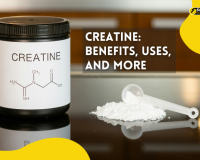What is a Calorie Deficit Diet?

In the quest for weight loss and better health, the term “calorie deficit diet” frequently arises. This diet concept, rooted in the fundamental principles of energy balance and metabolism, is essential for anyone looking to shed pounds. This comprehensive guide aims to demystify the calorie-deficit diet, explaining its principles, benefits, potential pitfalls, and practical applications.
What is a Calorie Deficit?
A calorie deficit occurs when you consume fewer calories than your body needs to maintain its current weight. To understand this, it’s crucial to grasp the concept of Total Daily Energy Expenditure (TDEE), which represents the number of calories your body burns in a day through basic bodily functions (Basal Metabolic Rate or BMR) and physical activity.
Calculating Your Calorie Needs
1. Basal Metabolic Rate (BMR): This is the number of calories your body needs to perform essential functions like breathing, circulating blood, and regulating temperature. BMR can be estimated using various formulas, such as the Harris-Benedict or Mifflin-St Jeor equation.
Harris-Benedict Equation:
•For men: BMR = 88.362 + (13.397 × weight in kg) + (4.799 × height in cm) – (5.677 × age in years)
•For women: BMR = 447.593 + (9.247 × weight in kg) + (3.098 × height in cm) – (4.330 × age in years)
Mifflin-St Jeor Equation:
•For men: BMR = (10 × weight in kg) + (6.25 × height in cm) – (5 × age in years) + 5
•For women: BMR = (10 × weight in kg) + (6.25 × height in cm) – (5 × age in years) – 161
2. Physical Activity Level (PAL): This factor accounts for the calories burned through physical activity. It’s multiplied by the BMR to give the TDEE.
•Sedentary (little to no exercise): BMR × 1.2
•Lightly active (light exercise/sports 1-3 days/week): BMR × 1.375
•Moderately active (moderate exercise/sports 3-5 days/week): BMR × 1.55
•Very active (hard exercise/sports 6-7 days a week): BMR × 1.725
•Super active (tough exercise/physical job): BMR × 1.9
3. Total Daily Energy Expenditure (TDEE): This is the total number of calories you burn in a day. It’s calculated by multiplying your BMR by your PAL.
Benefits of a Calorie Deficit Diet
1. Weight Loss: The primary benefit of a calorie-deficit diet is weight loss. By consistently consuming fewer calories than your body needs, you force it to tap into stored fat for energy.
2. Improved Metabolic Health: Weight loss can lead to improvements in metabolic health markers, such as blood sugar levels, cholesterol levels, and blood pressure.
3. Enhanced Mobility and Physical Function: Carrying less weight can reduce strain on joints and improve overall mobility, making physical activities easier and more enjoyable.
4. Mental Health Benefits: Achieving weight loss goals can boost self-esteem and confidence, potentially improving mental well-being.
Learn More: 30-30-30 Rule: The Three-Part Formula for Lasting Weight Loss
Potential Pitfalls of a Calorie Deficit Diet
1. Nutrient Deficiency: Consuming fewer calories can sometimes lead to inadequate intake of essential nutrients. It’s crucial to choose nutrient-dense foods to meet your body’s needs for vitamins, minerals, and macronutrients.
2. Loss of Muscle Mass: If the calorie deficit is too large or protein intake is insufficient, the body may break down muscle tissue for energy. Combining a calorie deficit diet with strength training and adequate protein intake can help preserve muscle mass.
3. Decreased Energy Levels: Some people may experience fatigue or decreased energy levels when first adjusting to a calorie deficit diet. Ensuring a balanced intake of macronutrients (carbohydrates, proteins, and fats) can help maintain energy levels.
4. Psychological Stress: Strict dieting can sometimes lead to feelings of deprivation and increased stress. It’s important to adopt a sustainable approach to eating and allow for occasional treats.
Practical Tips for Implementing a Calorie Deficit Diet
1. Track Your Calories: Using a food diary or a calorie-tracking app can help you monitor your daily intake and ensure you’re in a calorie deficit.
2. Eat Nutrient-Dense Foods: Focus on whole, unprocessed foods that provide essential nutrients while being lower in calories. These include fruits, vegetables, lean proteins, whole grains, and healthy fats.
3. Control Portion Sizes: Being mindful of portion sizes can help prevent overeating. Using smaller plates, measuring portions, and avoiding eating straight from large packages can aid in controlling portions.
4. Stay Hydrated: Drinking water can help control hunger and prevent overeating. Sometimes, thirst is mistaken for hunger.
5. Exercise Regularly: Combining a calorie deficit with regular physical activity can enhance weight loss and improve overall health. Aim for a mix of cardiovascular exercises, strength training, and flexibility exercises.
6. Get Enough Sleep: Adequate sleep is crucial for weight loss and overall health. Poor sleep can disrupt hormones that regulate hunger and appetite, potentially leading to overeating.
7. Be Patient and Consistent: Weight loss takes time and consistency. Avoid extreme diets or quick fixes, and focus on making sustainable lifestyle changes.
Learn More: What is Intermittent Fasting? A Comprehensive Guide
Common Myths and Misconceptions
1. All Calories Are Created Equal: While it’s true that a calorie is a unit of energy, the source of the calories matters. Nutrient-dense foods provide essential nutrients and promote satiety, while empty-calorie foods (e.g., sugary snacks, soda) provide little nutritional value and can lead to overeating.
2. You Can Out-Exercise a Bad Diet: Exercise is crucial for health and can aid in weight loss, but it’s challenging to compensate for a poor diet with exercise alone. Diet and exercise should work together for optimal results.
3. Fasting or Skipping Meals is Effective: While intermittent fasting can work for some, skipping meals can lead to increased hunger and overeating later. It’s important to find an eating pattern that you can sustain.
4. Carbs Are Bad: Carbohydrates are an essential macronutrient and a primary energy source. The key is to choose complex carbohydrates (e.g., whole grains, fruits, vegetables) over refined carbohydrates (e.g., white bread, sugary snacks).
Monitoring Progress and Adjusting the Diet
Regularly monitoring your progress can help you stay on track and make necessary adjustments. Here are some strategies:
1. Weigh Yourself Weekly: Track your weight once a week at the same time of day to monitor changes. Daily fluctuations are normal, so it’s essential to look at long-term trends.
2. Take Measurements: Measure your waist, hips, chest, and other areas to track changes in body composition. Sometimes, you may lose inches even if the scale doesn’t move significantly.
3. Keep a Food Journal: Documenting your food intake, hunger levels, and feelings can provide insights into your eating habits and help identify areas for improvement.
4. Adjust Calorie Intake as Needed: As you lose weight, your TDEE will decrease. Periodically reassess your calorie needs and adjust your intake accordingly to continue losing weight.
5. Consult a Professional: A registered dietitian or nutritionist can provide personalized guidance and help you create a balanced, effective calorie deficit diet.
Conclusion
A calorie deficit diet is a scientifically proven method for achieving weight loss. By understanding your body’s energy needs and creating a sustainable calorie deficit, you can effectively lose weight and improve your overall health. It’s important to focus on nutrient-dense foods, maintain a balanced approach, and make long-term lifestyle changes for lasting results. Remember, patience and consistency are key to success. With the right mindset and strategies, you can achieve your weight loss goals and enjoy the benefits of a healthier, more vibrant life.









 Fruits are an excellent source of vitamins, minerals, and antioxidants, which are essential for maintaining healthy skin. Berries, in particular, are known to be superfoods for skin health. Blueberries are packed with antioxidants that help protect the skin from damage caused by free radicals and environmental factors such as pollution and UV rays. Strawberries are a rich source of vitamin C, which helps boost collagen production, and cherries contain anthocyanins, which have anti-inflammatory properties that help to reduce skin irritation and redness.
Fruits are an excellent source of vitamins, minerals, and antioxidants, which are essential for maintaining healthy skin. Berries, in particular, are known to be superfoods for skin health. Blueberries are packed with antioxidants that help protect the skin from damage caused by free radicals and environmental factors such as pollution and UV rays. Strawberries are a rich source of vitamin C, which helps boost collagen production, and cherries contain anthocyanins, which have anti-inflammatory properties that help to reduce skin irritation and redness. Like fruits, vegetables are a great source of vitamins, minerals, and antioxidants that are essential for maintaining healthy skin. Leafy green vegetables, such as spinach and kale, are rich in vitamin A, which is important for skin health. Vitamin A helps to repair skin tissues, promote cell growth, and reduce the appearance of fine lines and wrinkles.
Like fruits, vegetables are a great source of vitamins, minerals, and antioxidants that are essential for maintaining healthy skin. Leafy green vegetables, such as spinach and kale, are rich in vitamin A, which is important for skin health. Vitamin A helps to repair skin tissues, promote cell growth, and reduce the appearance of fine lines and wrinkles. Nuts and seeds are a great source of healthy fats, vitamins, and minerals, which are important for healthy skin. Walnuts, for example, are rich in omega-3 fatty acids, which help to reduce inflammation in the skin and protect it from damage caused by UV rays. Almonds are an excellent source of vitamin E, which helps to protect the skin from damage caused by free radicals and promote healthy skin growth.
Nuts and seeds are a great source of healthy fats, vitamins, and minerals, which are important for healthy skin. Walnuts, for example, are rich in omega-3 fatty acids, which help to reduce inflammation in the skin and protect it from damage caused by UV rays. Almonds are an excellent source of vitamin E, which helps to protect the skin from damage caused by free radicals and promote healthy skin growth. Fish and seafood are great sources of protein and
Fish and seafood are great sources of protein and  Whole grains are an excellent source of fibre, which is important for healthy digestion and elimination of toxins from the body. They are also rich in vitamins and minerals, which are essential for maintaining healthy skin. Whole wheat, for example, is a good source of selenium, which helps to protect the skin from damage caused by UV rays.
Whole grains are an excellent source of fibre, which is important for healthy digestion and elimination of toxins from the body. They are also rich in vitamins and minerals, which are essential for maintaining healthy skin. Whole wheat, for example, is a good source of selenium, which helps to protect the skin from damage caused by UV rays.









